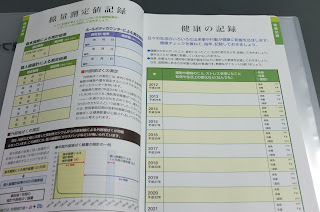The NHK World programme 'Booked for Japan' is being broadcast today. I'd been apprehensive but it's very well done and eloquently encaptures the feelings of people here, the trauma we went through and the new determination to be self reliant and in control. At the hour of writing there are still two repeats, so catch it if you can.
Front page headline in the local paper yesterday: Tepco has eventually decided to cancel plans to build a new nuclear power station in Fukushima. The plans were first unveiled in 1967. Billions of yen have been spent on purchasing land and now, some 45 years later, they announce that in the face of local opposition it won't be possible to construct the plant. But why did the whole thing take so long? It doesn't exactly inspire confidence in those deciding our nuclear future. More to the point, the decommissioning of reactors 5 & 6 at Fukushima Daiichi and reactors 1 to 4 at Fukushima Daini is not included in Tepco's plan for the next fiscal year.
Front page headline in the local paper today: in response to a question in the Diet the Prime Minister has said that even if reactors 5 & 6 at Fukushima Daiichi and reactors 1 to 4 at Fukushima Daini meet the new safety standards, re-opening them will be difficult in view of the feelings of people in Fukushima. Well, well, he was listening when he came here last week.
Front page headline in the local paper yesterday: Tepco has eventually decided to cancel plans to build a new nuclear power station in Fukushima. The plans were first unveiled in 1967. Billions of yen have been spent on purchasing land and now, some 45 years later, they announce that in the face of local opposition it won't be possible to construct the plant. But why did the whole thing take so long? It doesn't exactly inspire confidence in those deciding our nuclear future. More to the point, the decommissioning of reactors 5 & 6 at Fukushima Daiichi and reactors 1 to 4 at Fukushima Daini is not included in Tepco's plan for the next fiscal year.
Front page headline in the local paper today: in response to a question in the Diet the Prime Minister has said that even if reactors 5 & 6 at Fukushima Daiichi and reactors 1 to 4 at Fukushima Daini meet the new safety standards, re-opening them will be difficult in view of the feelings of people in Fukushima. Well, well, he was listening when he came here last week.
Got the bike out for the first time this season and took some pictures. The old wing of the town hall was badly damaged in the earthquake but has just been repaired. The offices had to move to several other facilities after the disaster which added to the general chaos. The city gymnasium too is about to re-open. Not very attractive buildings, but I was rewarded by the sight of plum blossom at the nearby Museum of Literature.
 |
| City Hall. This was the site of Koriyama's only earthquake fatality. The ceiling fell down in the observation deck and killed a man. They didn't find him for a week. |
 |
| This is the kind of work they do to make buildings earthquake proof. You see it a lot in schools. Some private houses too. Not very pretty but it makes the buildings safe. |
 |
| Putting finishing touches to the repairs to the gymnasium |
 |
| Plum blossom outside the Koriyama Museum of Literature. Lovely scent. |





